Boeing and Norwegian defence and aerospace company Nammo say they have successfully test-fired a ramjet-powered artillery projectile.
During the test at the Andøya Test Center in Norway, a Boeing Ramjet 155 projectile was fired out of a cannon, and its ramjet engine ignited successfully. The firms say that this “demonstrated flight stability with a well-controlled engine combustion process”.
“We believe the Boeing Ramjet 155, with continued technology maturation and testing, can help the U.S. Army meet its long-range precision fires modernization priorities,” said Steve Nordlund, Boeing Phantom Works vice president and general manager.
“This is a historic moment for Nammo,” said Nammo Chief Executive Officer Morten Brandtzæg. “The test results demonstrate that ramjets are viable and can fundamentally change the future of artillery”.
“We have great confidence in the ramjet concept,” Brandtzæg added.
“The test – with all aspects from cannon firing, to the projectile body, fins, and trajectory all functioning perfectly – represents a real technological breakthrough in artillery, and a major success for Boeing, Nammo, and the U.S. Army.”
The long-range test at Andøya follows years of research, development and testing by Boeing and Nammo of ramjet technology, including more than 450 static or short-range tests.
Boeing Phantom Works and Nammo have been working together under a strategic partnership to jointly develop and produce the next generation of boosted artillery projectiles. In July 2019, the Boeing-Nammo team was awarded a contract under the U.S. Army’s XM1155 programme to develop and mature the Ramjet 155 projectile. In May 2021, the team was awarded a Phase II technology development contract.
Ramjet 155 uses an engine in which the air is drawn in for combustion is compressed solely by the forward motion of the projectile at supersonic speeds. Considered a hybrid between guided artillery and missiles, the programme has an objective of a common round design that can be used in L39 and L58 cannons.
You can read more about this here.




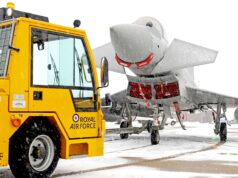


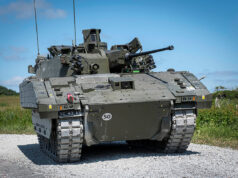

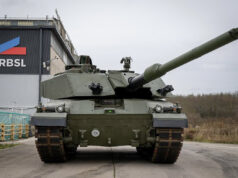
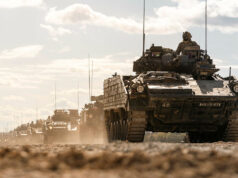
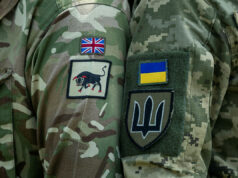

Very interesting for Naval gunfire too.
The BAE TMF looks increasing like a lost opportunity…
But…the US seems to be looking at 58cal barrels as the future, with a lot of the present guns available in 52cal. Hopefully we’ll take this into account when choosing a new system. Personally I think Ukraine has shown that range is absolutely crucial.
Don’t see the air scoop on any of the images I guess that is the secret sauce they don’t want to reveal. Seem it engaged the ramjet (at least for the tes) as soon as fired. Presume for actual rounds you want to do it late as possible to maximize range, or as early as possible to hide firing location.
Forgive me for possibly displaying my ignorance, but for range purposes, wouldn’t you want to fire the ramjet early, when the projectile is on the steepest upwards trajectory?
as long as shell still maintains enough velocity to fire the ramjet then the longer the delay the further it would fly?
I would have thought that employing a ramjet is equivalent to the gun having a higher muzzle velocity. But maybe it depends on the speed window the ramjet is designed for – I would just assume it is most effective at higher speeds, i.e at the start of the trajectory.
I’d expect the best time to be at, or just before, the top of the ballistic arc.
Edit: assuming it has enough speed.
No Ramjet requires a Mach 3 airflow, you need to ignite the engine straight away. Think of it more as an initial velocity sustainer that will burn for a couple of minutes.
The graphics have fins and the guidance would be INS/GPS rather than a seeker, so I am not sure it would fly in a true ballistic trajectory necessarily.
The body itself may create lift, as would the fins, and at mach three with the sustained motor presumably the most efficient flight path could be chosen. The engine “fires” for 50 seconds supposedly. It may be more of a missile, able to do some limited course changes to confuse teaching radars. Coasting rather than simply plunging with GPS course corrections. ( HImars footage in Ukraine shows the missiles pitching up, to confuse counter battery radar)
Hopefully testing videos if released should gives some clues.
Rocket is ignited straight away probably as it leaves the barrel and fins pop out, you need the initial velocity to create enough mach 3 airflow for the ramjet to get sufficent oxygen. Solid fuel (without oxidizer) then burns for a couple of minutes and the projectile reaches its apogee after the fuel has been exhausted and gravity has captured it again.
Eliminating the requirement for oxidiser in the fuel makes the fuel about 2.5-3 times more energy dense and the rocket will burn for longer than a conventional rocket assisted round meaning greater ranges can be achieved.
The front end looks like a Mig 21 air intake
Well after the debarkle that was the Long Range Land Attack Projectile (round designed for the 155mm gun on the US Navy’s Zumwalt-class destroyer) which saw a costing of around $1 million a round, I have to ask can the US afford this new one?
It’s a good Point, as we are see in Ukraine, even with precision weight of fire is still important and that means a lot of rounds stocked up and ready. Also I assume the well need to be a high ish level of maintaining the ram jet element.
I think the cost of the round only skyrocketed from to $1m after they cancelled 29 of the 32 planned Zumwalts. Which meant development and production costs ended up being spread across the rounds for just 6 guns rather than 64.
Buying more always reduces the price and vice versa.
Nammo are aiming for 150km grange for these… that would certainly terrify the Orcs. Sadly probably awhile before it enters production.
Here is a video of the projectile.
https://www.youtube.com/watch?v=0vIPNElDkns
Are these unguided? If so, what would be the accuracy at 150Km? Adequate? Or ‘there-abouts’
if guided, then no problem, although there would appear to be much less explosive filling than a normal round.
AA
I read about this elsewhere a few days ago and if I remember correctly I think I read that they will have some form of guidance but don’t quote me on it.
GPS/INS guided.
But they’re also talking about the ability to hit moving targets. Which either means a version with seeker (like MMW), dispensing sub-munitions like BONUS or being reliant on laser designationby 3rd parties and having a SAL head.
It’s almost a missile then. Be interested to know the cost. Presumably much less than an MLRS round.
Would this be a lot faster than a rocket and therefore less interceptable?
AA
For a moment there I read it as Britain and Nammo develop ramjet shell. I knew it was to good to be true
I wonder how much explosive filling is reduced by to accomodate the ramjet?
The question is…is this a halfway house thing…very expensive compared to a normal round and not as much punch but a much longer range, less expensive than a missile and nowhere near as much punch but with comparable range?
Can you afford to fire them in numbers or are they simply a back pocket thing for ‘interesting’ targets? But then the gun would be much closer to the front line when being used with conventional shells and more vulnerable.
The naval sphere is where something like this could score big time. Range and numbers on a target in a short space of time..would be like having a magazines worth of anti-ship missiles.
AA
Oh for some BL Mk Vlll 8″ 50cal navy guns.